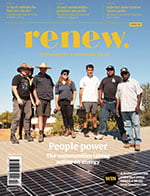So you want to be a home energy assessor?
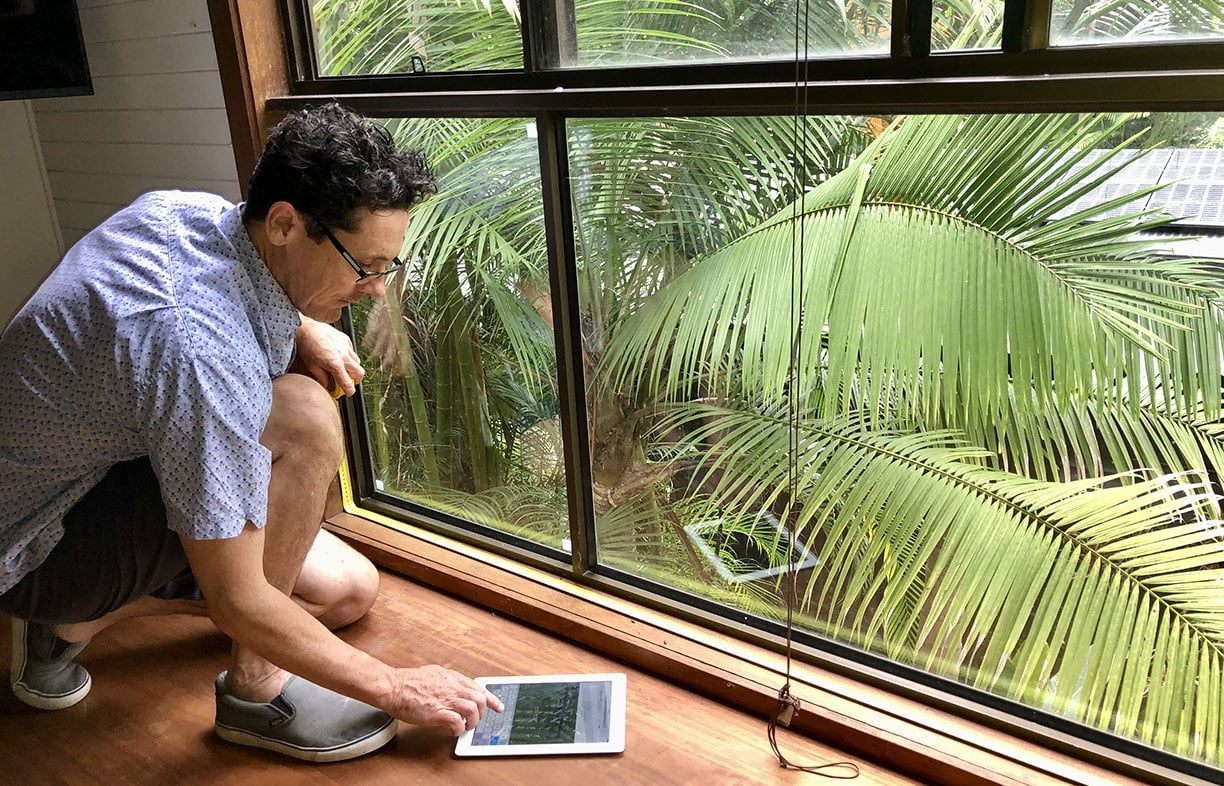
Renew’s sustainability researcher Rachel Goldlust shares what she’s learnt.
Like many feeling the pinch of the increased cost of living and the desire to create a buffer as the climate and economy becomes more unstable, I thought I’d try to upskill as an accredited Residential Efficiency Scorecard assessor, check out what’s involved and what the broader industry looks like.
Although experienced in household energy and sustainable design, I’ve found the residential energy assessment field quite confusing. Here, I explore and relay the process for anyone looking into this field as a potential profession or side-hustle. It also seemed timely given the growing interest in energy efficiency and calls to strengthen the National Energy Performance Strategy by rating our housing stock and its poor thermal performance.
What is the Scorecard program?
While the energy assessment field, its various providers, businesses and services seem rather chaotic, the Residential Efficiency Scorecard (or Scorecard) is an established voluntary nation-wide performance rating tool designed to help households better understand the energy performance of existing homes. In 2017, the Victorian government released the first home energy rating program that scaled homes from 1 to 10, much like the star rating given to household appliances.
Now available across Australia, the evolution of Scorecard, including the assessment tool, training, accreditation, and ongoing quality assurance is delivered by the Victorian Government on behalf of all Australian governments. Scorecard remains the only government-supported nationally-available rating for existing homes. The Scorecard rating remains a reliable and certifiable process for households to receive vital information on the running costs of the fixed appliances in a home, and make energy and thermal efficiency improvements (see Renew 142 for an earlier article on this topic).
The Scorecard is endorsed by the Nationwide House Energy Rating Scheme (NatHERS), however it is not currently formally accredited for use under the scheme and cannot provide a NatHERS rating. Work is underway to expand NatHERS to include existing as well as new homes, within an evolving National Framework for Residential Energy Efficiency Disclosure currently working through the potential for voluntary or mandatory disclosure schemes across different jurisdictions. As explored below, NatHERS is planning to expand to offer ‘whole of home’ ratings for existing homes that consider thermal shell, appliances and solar. Under the system being proposed, Scorecard assessors may look to become accredited under this new Tool.
The role of assessors—what does the work involve?
It is widely agreed that tools alone are not sufficient to provide a reliable system for rating existing buildings. To guarantee a mature and trusted framework for rating existing homes, the Scorecard accreditation process has been developed with input from assessors who are required to comply with quality principles to maintain the reputation of the profession and the program. Most assessments follow the same fundamental procedure; to gather data of the home and its occupants, input it into a ratings tool that can help consumers reduce their energy bills, make their home more comfortable, go all-electric or plan a renovation.
During a Scorecard assessment, the assessor will visit your home, discuss your goals, and conduct a thorough on-site evaluation. They will collect data of your home’s fixed appliances and features. The household then receives a certificate with an overall energy star rating, a hot and cold comfort rating, and key recommendations and priorities. The certificate also includes a breakdown of the relative energy consumption and efficiency of the home’s fixed appliances, as well as details of annual energy consumption and carbon emissions, generated from Scorecard tool’s detailed modelling.
Scorecard assessors can work with builders, architects and householders when planning a renovation or new build. The assessor can also recommend options for improvement such as upgrading insulation, adding external blinds and weatherstripping, installing double-glazed windows, more efficient heating and cooling systems, upgrading the hot water system and installing a solar PV system.
Assessors might work directly with the householder, rental provider or with a builder, architect or organisation such as a state government project. Some architects and builders have become assessors to enhance the experience for their customers and create an additional revenue stream. Some provide additional services such as coordinating trades or delivering upgrades, updating the Scorecard certificate after upgrades have been completed, blower door testing and thermal camera imaging. Assessors are currently not charged for accreditation, but less experienced assessors may need to undertake some units of study to gain basic competencies.
Why become an assessor—the market for home ratings
There is growing demand for residential energy efficiency data in Australia. A recent report compiled by real estate firm PropTrack found that 68% of people view energy efficiency ratings as important when buying, renting or building a property. As energy prices continue to rise, it has generated both an economic and practical shift towards energy saving capacity within the shell of the home (as opposed to switching energy retailers or adding on solar) and the desire for personalised, tailored assistance is slowly growing on more Australian householders. Scorecard assessments are now included in the Victorian Energy Upgrades (VEU) program—reduced costs have stimulated the market for home energy audits in that state.
State and territory governments are starting to use Scorecard in targeted programs to understand how homes can best be upgraded. Under the Victorian Government’s Energy Savvy Upgrades program, 612 vulnerable households received energy efficiency upgrades guided by Scorecard assessments, with households reporting a reduction in energy costs and an improvement in health and comfort. The ACT has long offered the Renters’ Home Energy Program for residents who can book in a free 60-minute phone call or in-person energy assessment. Increasingly, local governments are offering discounted Scorecard assessments to support residents, as has been the case in Cockburn in WA, the City of Adelaide, and in Banyule and Stonnington in Vic.
Some leading builders use Scorecard to promote homes that are low cost to run and comfortable to live in, while lenders like Bank Australia are starting to use home energy assessments to underpin lower cost loans. An increasing number of banks and financial institutions such as Gateway, RACQ and Regional Australia Bank are rewarding their customers with low interest rate ‘green housing loans’ for energy efficient houses, renovations, or upgrades, often requiring an assessment to prove and/or maintain eligibility. Financial institutions are eager for reliable measurements of the impacts of home retrofits.
While the federal government allocated $1.3 billion to establish the Household Energy Upgrades Fund in 2023, recent calls for the establishment of a $2 billion national fund to retrofit and electrify low-income homes signifies that there are still major gaps in equitable access to savings that can be made once householders are aware of how their home works.
While Scorecard and NatHERS are vying to establish the rating standard that could be used to support disclosure at point of sale and lease and for minimum standards for rental properties, some confusion remains on what a federal roll-out of household energy standards and ratings will look like and how it will work. If individual states choose to legislate for mandatory disclosure, such as what the ACT has done for close to 20 years, then the market for qualified assessors will expand substantially.
NatHERS is currently developing robust technical guidelines and protocols, assessor accreditation arrangements, legal frameworks, and compliance and enforcement processes. Critical to the rollout, and subsequent development of this program and growing the capacity of the industry, is a network of trained, government-accredited assessors who can conduct the pre-requisite on-site visit. Currently, only accredited Scorecard assessors can deliver assessments and create certificates.

How to become an assessor
The website homescorecard.gov.au provides the step-by-step outline of what’s involved in becoming an accredited Scorecard assessor, a process which is conducted online. The accreditation process contains several learning modules, tests, practice assessments and exams to be completed within nine months of starting. The assessor program requires participants to demonstrate a strong customer relationship and engagement approach, a rigorous assessment approach, recognise the needs of each client, sound safety practices for themselves and others, robust administrative processes and a desire for feedback and improvement.
As part of the training, assessors learn how to input data into the rating tool and undertake four to six practice assessments on homes of their choice. Once completing the final exam and necessary paperwork, assessors must obtain Public Liability and Professional Indemnity Insurance and submit it through the digital portal.
While the process is open to anyone, a selective entry stream can be accessed depending on your relative experience or existing accreditation or education qualifications. There are different entry points if you have already completed a Certificate IV in Home Sustainability Assessment or Home Energy Efficiency and Sustainability for example, or if you are an experienced home energy assessor. The piloting process discovered that assessors with little training often made significant errors affecting the accuracy of the rating and recommended upgrades, as well as the overall consumer experience.
Do we need more assessors—and what about AI?
The operation of buildings accounts for half of Australia’s electricity use and almost a quarter of greenhouse gas emissions. Given policy makers, agencies and energy companies are all in agreement that a thermally efficient home will help reduce energy demand and that energy performance upgrades are the most efficient means of reducing household bills, the role of assessors is likely to increase in coming years as more attention is spotlighted on households as key to achieving net-zero emissions, transition off gas and to support mandatory programs.
In 2020, the CSIRO started developing RapidRate, an artificial intelligence tool that estimates energy ratings for established homes. Based on input from data collected since the establishment of NatHERS in 1993, the pilot collaboration with data analytics provider CoreLogic has taken data from 1.1 million homes to train and evaluate the RapidRate model, ensuring consistency between systems.
Currently under trial, RapidRate generates an estimated Star Rating aligned with NatHERS and generates estimated heating and cooling energy required for the home (thus far only stand-alone dwellings are considered). Although Australia is lagging other like nations, particularly Ireland, in not having sufficient baseline data on the existing housing stock to be able to model and budget for the large task of bringing up our housing stock from the current average of 1.7 stars, there are issues with imagining that AI tools can replicate the work that humans currently do as home energy assessors.
Experienced energy assessors like Seb Crangle (see box) are sceptical that AI tools can do more than mapping out the house and spitting out standardised pre-programmed recommendations. Seb, a contributor to Renew, argues that many people still want to sit down with an experienced professional who can consider their families priorities, budgetary needs and aesthetic/cultural preferences when thinking about making major changes to their homes. While Seb acknowledges that some developments in technology will make the laborious task of collecting individual household measurements and data more streamlined, the capacity of AI tools only speaks to half of the job required, one based upon building trust and forming a human connection to see actual changes made to household energy use and behaviours.
In my research, I’ve discovered there is space for more assessors, particularly belonging to Culturally and Linguistically Diverse communities, and for women who are seen as more trustworthy to enter the profession as the growing desire to understand household energy use expands across the country. There is space for more assessors in remote and regional communities, who can build relationships with businesses and industry in harder to reach areas and provide trusted information to householders on how they can make individual savings. As my chat with Scorecard uncovered, the sky is the limit within the current energy landscape for enterprising assessors to build their own business networks, relationships with suppliers and contracts with local governments to build the momentum and social norming for in-home energy assessments. It’s an industry to watch, and I’ll keep readers posted on how I fare.
A chat with Seb Crangle, Renew member and home energy assessor.
Seb Crangle lives in the Northern Rivers region of New South Wales. We asked him about how he became an energy assessor, why he believes it’s a valuable career and what the work looks like week to week.
Could you give us some background as to what your journey has looked like, and how you came to be an assessor?
Before Scorecard become a nationwide program, I had been working in disability services and volunteered as an ‘Energy Coach’ for a community-owned energy company. That led to a paid role providing energy audits to customers, but I still didn’t have any qualifications, and I’d dabbled with commercial auditing by doing a course with the Energy Efficiency Council. I was reading an article in Renew about Scorecard becoming a national program, and I and leapt at it. Once accepted, I went through the accreditation process that took me a good five months to get through, but I learnt a lot and now had a powerful tool to support the recommendations I gave to households. This gave me the foundation I needed to quit my job as a Quality Manager and start to build a business as an energy consultant, with a focus on residential energy performance.
What does your average week look like, what does the work entail and how do you find work?
I can’t make a living entirely from being a Scorecard Assessor, especially as I’m based in Northern NSW and no one had heard of Scorecard. Even now my prospective clients have only heard of Scorecard if they read Renew, listen to energy efficiency podcasts, or are on a Facebook group like MEEH. So, even when clients are keen for an ‘energy audit’ I have to educate them on the benefits of a full Scorecard assessment. I have been fortunate that the NSW Government has been delivering pilot projects to assess the state of homes built prior to energy efficiency standards and most of my Scorecard work comes from those projects. Week to week my work is really varied, and it’s been a long process of building brand awareness and trying to educate my own community along the way. To get there I tried everything: writing educational posts on Facebook, presenting to community groups, creating a website, even having an article published by Renew! (Issue 161, Oct 2022). In the past couple of years there has been a shift in momentum, thanks to people like Saul Griffith, the work of state and federal governments, and the community groundswell for taking action on climate change.
What do you see as the most valuable part about what you do and the services you provide?
The most valuable parts of what I do is to support households to pinpoint their priorities and provide them with the knowledge they need to make informed decisions. There is so much information available on improving energy and thermal performance of houses, and yet people get overwhelmed by it, and how to apply it to their specific home and circumstances. One thing I love about the Scorecard tool, and with NaTHERS software for new builds, is that by modelling the features of a home, its orientation, thermal shell and appliances, it allows you to determine the priorities for that home, based on applied building science. That ability to ‘model’ a home takes out much of the subjectivity and bias for what are the ‘best’ actions to take, and the role of the assessor is then to apply the results of that modelling to the motivations (and constraints) of the client. This is what makes it such a personalised, yet science-based service. With Scorecard for example, an assessor talks to the householders about their personal experience of the house, its thermal comfort in different seasons, energy demands, and how they use appliances; and then discusses factors like budget and motivations (environmental, financial). After modelling the home, they can run hypothetical ‘variation reports’ to test the impact of potential retrofit actions, like adding insulation, heat pump hot water, or even some exterior blinds. The tool then calculates what effect these would have on the annual energy consumed (and hence costs), as well as the home’s carbon footprint. I think this is invaluable information for households to prioritise and make informed decisions on home retrofits.
How do you see energy efficiency assessment as a job/industry? Do you encourage others to think about taking on this type of work?
I find it a really rewarding space to work in if you have a keen interest in the topic, and especially if you have deeper underlying motivations, such as making a difference environmentally. I was driven to quit my corporate job to make a difference and saw that supporting households with energy efficiency was where I could best contribute. It felt like quite a risk, and to some extent it still is. We (assessors) are quite reliant on the trajectories of government policy and public sentiment in determining whether we will have enough work to make a living from it. I encourage others, but only if they already have a strong knowledge base and caution that there are no guarantees that the demand for assessors will continue to build. On the one hand we have the potential for mandatory disclosure with governments and the commercial sector promoting the value of energy ratings, whilst simultaneously developing tools that may not even need an accredited and knowledgeable energy advisor to deliver them.
Do you think there is scope across the industry for more people to learn these skills and do this kind of work?
Yes, I’m optimistic that the demand for expert advisors and assessors will continue to grow, even in the context of AI tools and the like. I feel like we are in the early stages of a groundswell, and that there will always be a place for a personalised, customised and nuanced service, even if it only comes (as now) from those households who are the most motivated to take action and get expert support in the process.
Further reading
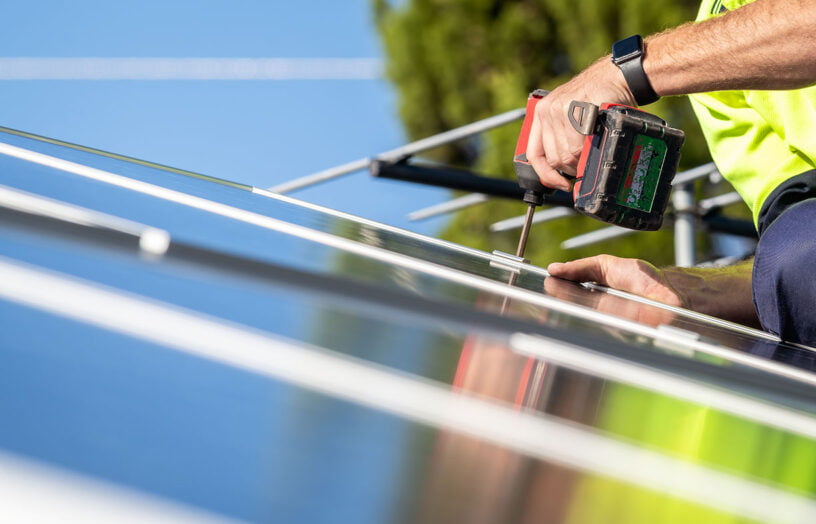 Efficient homes
Efficient homes
Tradies and the transition
Do we need as many tradies for electrification as many think? Not if we are innovative, writes Alan Pears.
Read more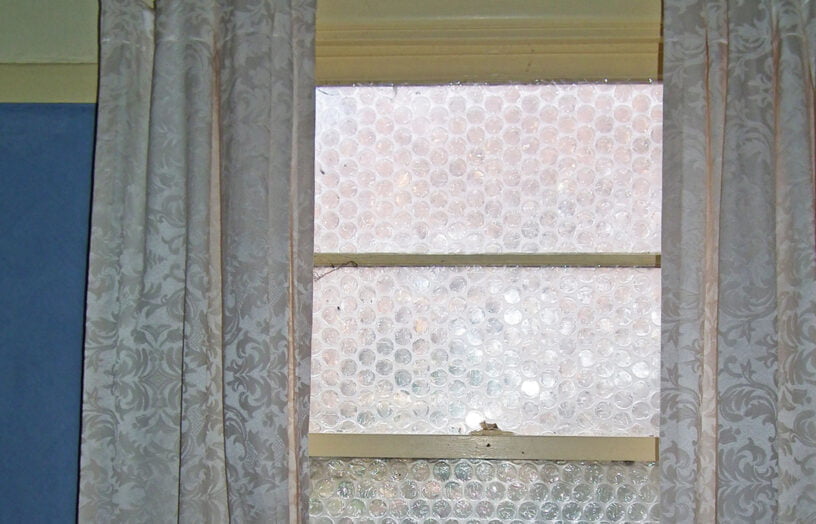 Efficient homes
Efficient homes
Double glazing on the (very) cheap
Do we need as many tradies for electrification as many think? Not if we are innovative, writes Alan Pears.
Read more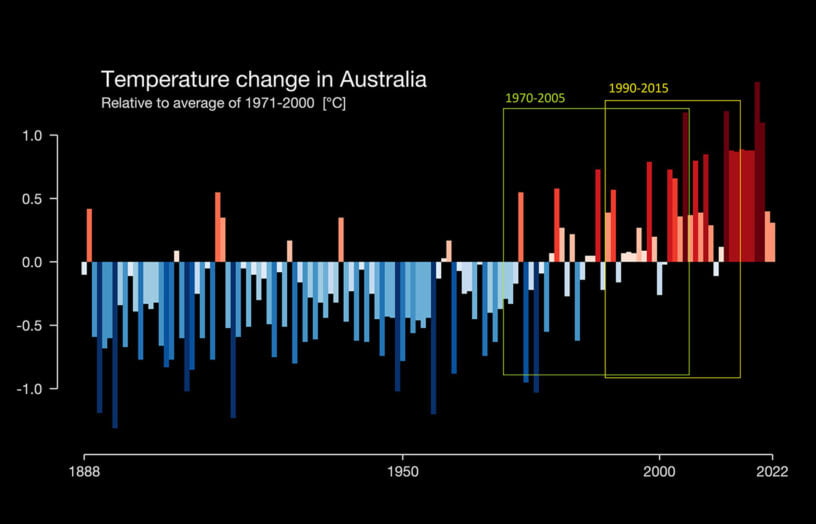 Efficient homes
Efficient homes
Building for a changing climate
Are we building homes for the future, or for the past? Rob McLeod investigates how climate change is impacting home energy ratings and the way we build our homes.
Read more

